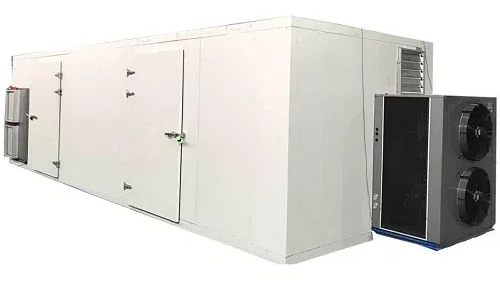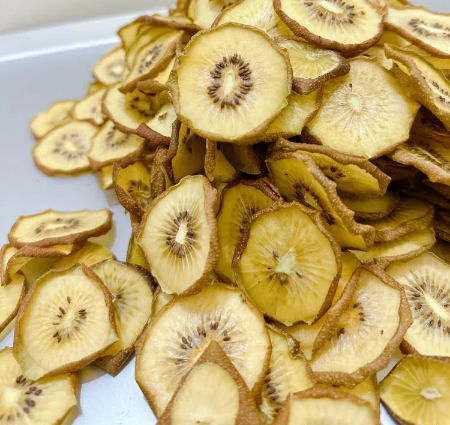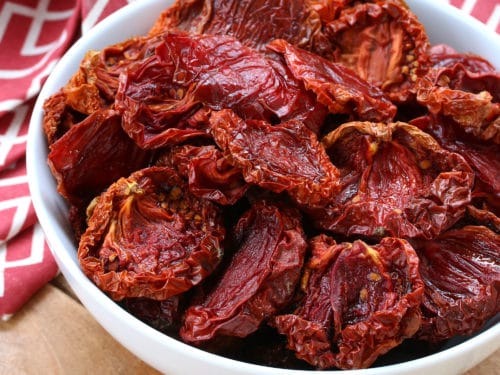
Content Menu
● The Benefits of Using a Food Dehydrator
>> 1. Extend Shelf Life of Food
>> 2. Healthier Snack Options
>> 3. Reduce Food Waste
>> 4. Save Money
>> 5. Versatility in Cooking
● How Does a Food Dehydrator Work?
● Popular Foods to Dehydrate
● Nutritional Benefits of Dehydrated Foods
● Creative Uses for Your Food Dehydrator
● Tips for Using a Food Dehydrator
● Environmental Benefits
● Conclusion
● FAQ
>> 1. What types of foods can I dehydrate?
>> 2. How long does it take to dehydrate food?
>> 3. Can I use my oven instead of a dehydrator?
>> 4. How should I store dehydrated foods?
>> 5. Is it worth buying a food dehydrator?
● Citations:
Food dehydrators are becoming increasingly popular among health-conscious individuals and culinary enthusiasts alike. These appliances offer a unique way to preserve food, create healthy snacks, and reduce waste. In this article, we will explore the benefits of food dehydrators, how they work, and why investing in one can be a game-changer for your kitchen.

The Benefits of Using a Food Dehydrator
1. Extend Shelf Life of Food
One of the primary reasons to buy a food dehydrator is its ability to significantly extend the shelf life of various foods. By removing moisture, dehydrators inhibit the growth of bacteria, mold, and yeast that can cause food spoilage. Dried fruits, vegetables, and meats can last for months or even years when stored properly.
2. Healthier Snack Options
Dehydrators allow you to create your own snacks without preservatives or added sugars. Homemade dried fruits and vegetable chips are not only healthier but also more flavorful than many store-bought alternatives. You can control the ingredients and customize flavors to suit your preferences.
3. Reduce Food Waste
If you often find yourself throwing away spoiled fruits and vegetables, a dehydrator can help you make the most of your purchases. By drying excess produce before it goes bad, you can enjoy your favorite fruits and vegetables year-round without the guilt of waste.
4. Save Money
Buying dried fruits and snacks can be expensive. A food dehydrator allows you to take advantage of bulk purchases or seasonal sales on fresh produce, reducing your overall food costs. Over time, this investment pays for itself as you create delicious snacks at home.
5. Versatility in Cooking
Food dehydrators are not limited to just fruits and vegetables; they can also be used to prepare jerky, fruit leathers, herbs, and even yogurt. The versatility of these machines opens up a world of culinary possibilities.
How Does a Food Dehydrator Work?
A food dehydrator operates by using low heat and airflow to remove moisture from food. The basic components include:
- Heating Element: This generates heat to dry the food.
- Fan: It circulates hot air around the food for even drying.
- Trays: Food is placed on trays that allow air to flow around it.
- Vents: These allow moisture-laden air to escape.
The process typically involves setting the temperature based on the type of food being dried. For example:
- Fruits: 135°F (57°C)
- Vegetables: 125°F (52°C)
- Herbs: 95°F (35°C)
Popular Foods to Dehydrate
You can dehydrate a wide variety of foods, including:
- Fruits: Apples, bananas, strawberries, mangoes
- Vegetables: Carrots, bell peppers, tomatoes
- Meats: Beef jerky, turkey jerky
- Herbs: Basil, thyme, oregano

Nutritional Benefits of Dehydrated Foods
Dehydrating foods not only preserves them but also retains their nutritional value. For instance:
- Fiber Content: Dried fruits and vegetables maintain their fiber content which is essential for digestion.
- Vitamins and Minerals: While some vitamins may diminish during dehydration (e.g., vitamin C), most nutrients remain intact. Studies suggest that dehydration retains 95% or more of vitamins A & C in fruits and vegetables.
- Antioxidants: Many dehydrated foods retain their antioxidant properties which are beneficial for health.
Creative Uses for Your Food Dehydrator
A food dehydrator isn't just for making snacks; it has numerous applications in meal preparation:
- Making Jerky: Use lean cuts of meat marinated in your favorite spices to create delicious jerky.
- Fruit Leathers: Blend fruits with a little sweetener (if desired) and dehydrate them into chewy fruit leathers.
- Herb Drying: Preserve your garden herbs by drying them for use in cooking throughout the year.
- Vegetable Chips: Create healthy vegetable chips from kale or sweet potatoes as an alternative to store-bought snacks.
Tips for Using a Food Dehydrator
1. Cut Uniformly: Slice foods into uniform pieces to ensure even drying.
2. Avoid Overcrowding: Leave space between pieces on trays for proper airflow.
3. Rotate Trays: If using a stackable dehydrator, rotate trays halfway through the drying process for consistent results.
4. Monitor Progress: Check periodically to avoid over-drying.
5. Conditioning Dried Foods: After dehydration, condition your dried foods by placing them in airtight containers for several days to equalize moisture levels among pieces. This step helps prevent mold growth during storage.
6. Storage Tips: Store dried foods in cool, dark places in airtight containers to maximize shelf life.
Environmental Benefits
In addition to personal health benefits, using a food dehydrator can also have positive environmental impacts:
- Sustainability: By reducing food waste through dehydration, you contribute to more sustainable consumption practices.
- Local Sourcing: Dehydrating seasonal produce encourages local sourcing and supports farmers' markets.
- Energy Efficiency: Food dehydrators generally consume less energy compared to traditional ovens when drying large batches of food.
Conclusion
Investing in a food dehydrator is an excellent decision for anyone looking to enhance their culinary skills while promoting healthier eating habits. With its ability to extend shelf life, reduce waste, save money, provide versatile cooking options, and contribute positively to the environment, a dehydrator is a valuable addition to any kitchen.

FAQ
1. What types of foods can I dehydrate?
You can dehydrate fruits, vegetables, meats (for jerky), herbs, and even yogurt.
2. How long does it take to dehydrate food?
Dehydration times vary depending on the type of food and thickness of slices but typically range from 4 to 24 hours.
3. Can I use my oven instead of a dehydrator?
While you can use an oven at low temperatures for dehydration, it may not provide the same efficiency or results as a dedicated dehydrator.
4. How should I store dehydrated foods?
Store dehydrated foods in airtight containers in a cool, dark place to maximize shelf life.
5. Is it worth buying a food dehydrator?
Yes! A food dehydrator offers numerous benefits including cost savings on snacks, reduced food waste, healthier eating options, and environmental sustainability.
Citations:
[1] https://www.webmd.com/diet/dehydrating-food-good-for-you
[2] https://www.youtube.com/watch?v=lEUA2t2XD5M
[3] https://www.youtube.com/watch?v=rXNIHzcE8F0
[4] https://www.cnet.com/pictures/tips-for-using-your-new-dehydrator/
[5] https://basecampfood.com/blogs/news/7-benefits-of-dehydrated-camping-food-you-should-know
[6] https://www.bestbuy.com/discover-learn/10-reasons-to-buy-a-food-dehydrator/pcmcat1634332391134
[7] https://www.freshoffthegrid.com/dehydrating-food/
[8] https://www.callmelore.com/fool-proof-healthy-dehydrator-recipes/
[9] https://www.backpackingchef.com/dehydrating-food.html
[10] https://www.webstaurantstore.com/guide/741/food-dehydrators-buying-guide.html
[11] https://www.commercialdehydrators.com.au/dehydrating-recipes-filters
[12] https://www.youtube.com/watch?v=LerlxsDYxe0
[13] https://coalatree.com/blogs/news/h1-span-style-font-weight-400-exploring-the-benefits-of-dehydrated-foods-for-outdoor-enthusiasts
[14] https://www.theseasonalhomestead.com/9-benefits-of-dehydrating-food-that-may-surprise-you/
[15] https://learn.eartheasy.com/guides/a-beginners-guide-to-dehydrating-food/
[16] https://www.backpackingchef.com/food-dehydrator-recipes.html
[17] https://silva-intl.com/blog/dried-and-delicious-the-health-benefits-of-dehydrated-foods
[18] https://www.goodhousekeeping.com/appliances/a31904157/what-is-a-dehydrator/
[19] https://www.breville.com/content/breville/us/en/blog/cooking/how-to-use-a-dehydrator/_jcr_content/root/container_741553154/container/image.coreimg.85.1200.jpeg/1718622778417/how-to-use-dehydrator.jpeg?sa=X&ved=2ahUKEwix4d_l7OyKAxWE8MkDHSJnMPcQ_B16BAgIEAI
[20] https://www.reddit.com/r/Cooking/comments/pbck40/dehydrator_recipes_that_arent_jerky_or_dried_fruit/
[21] https://brodandtaylor.com/pages/dehydrating
[22] https://www.healthline.com/nutrition/dehydrated-food
[23] https://www.allrecipes.com/article/how-to-use-a-food-dehydrator/
[24] https://www.pinterest.com/tribestlife/dehydrator-recipes/
[25] https://cdn.shopify.com/s/files/1/0382/1836/7107/files/Sahara-Explore_parallax.jpg?v=1709063571&sa=X&ved=2ahUKEwje9YfQ7OyKAxXlUkEAHaDfIBkQ_B16BAgNEAI
[26] https://www.foodandwine.com/lifestyle/12-brilliant-ways-use-dehydrator
[27] https://www.nisbets.co.uk/benefitsofafooddehydrator
[28] https://www.kencko.com/blog/the-goods/does-dehydrated-food-and-vegetables-lose-nutritional-value
[29] https://homesteadingfamily.com/preservation-101-intro-to-dehydrating-food/











